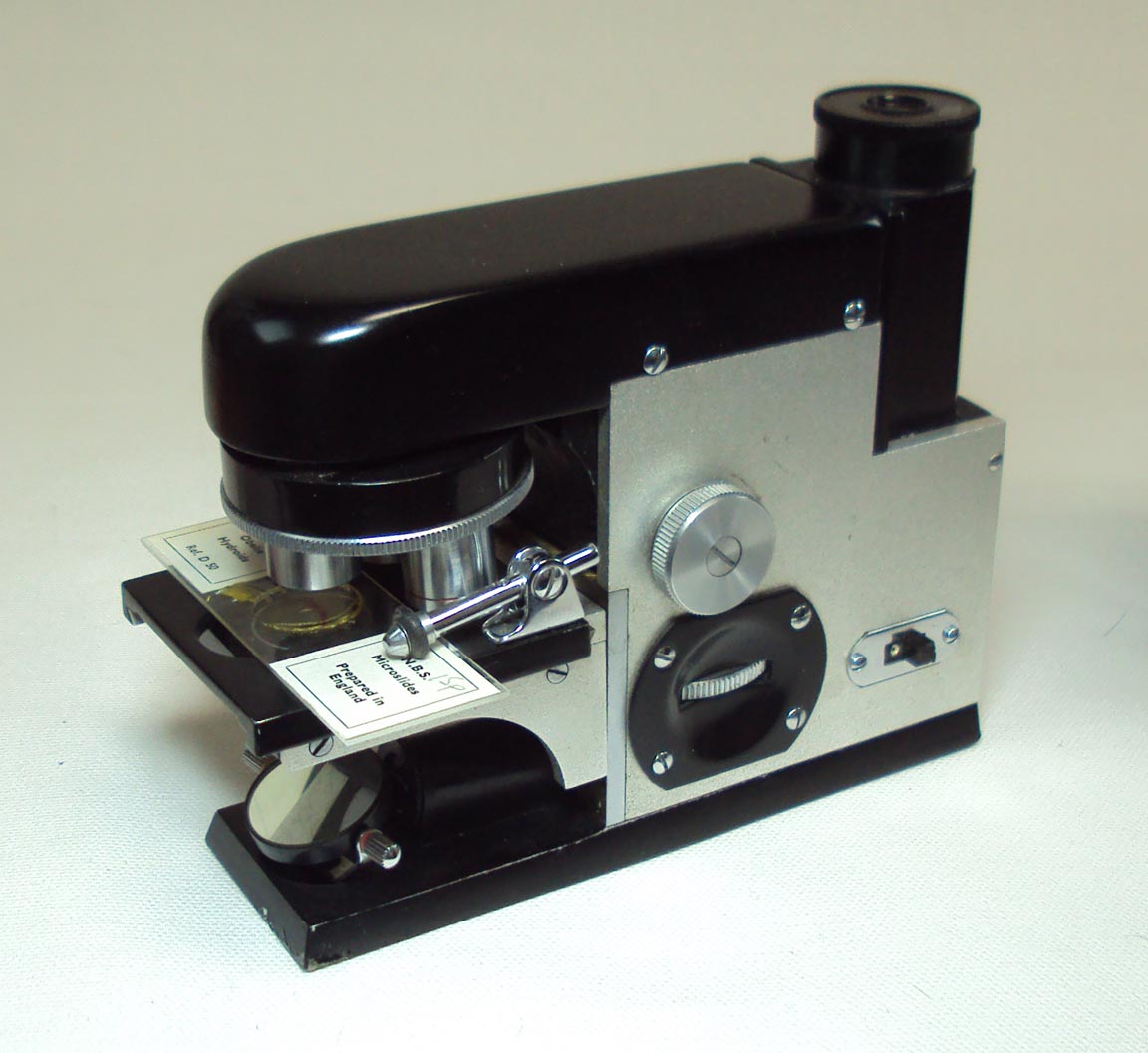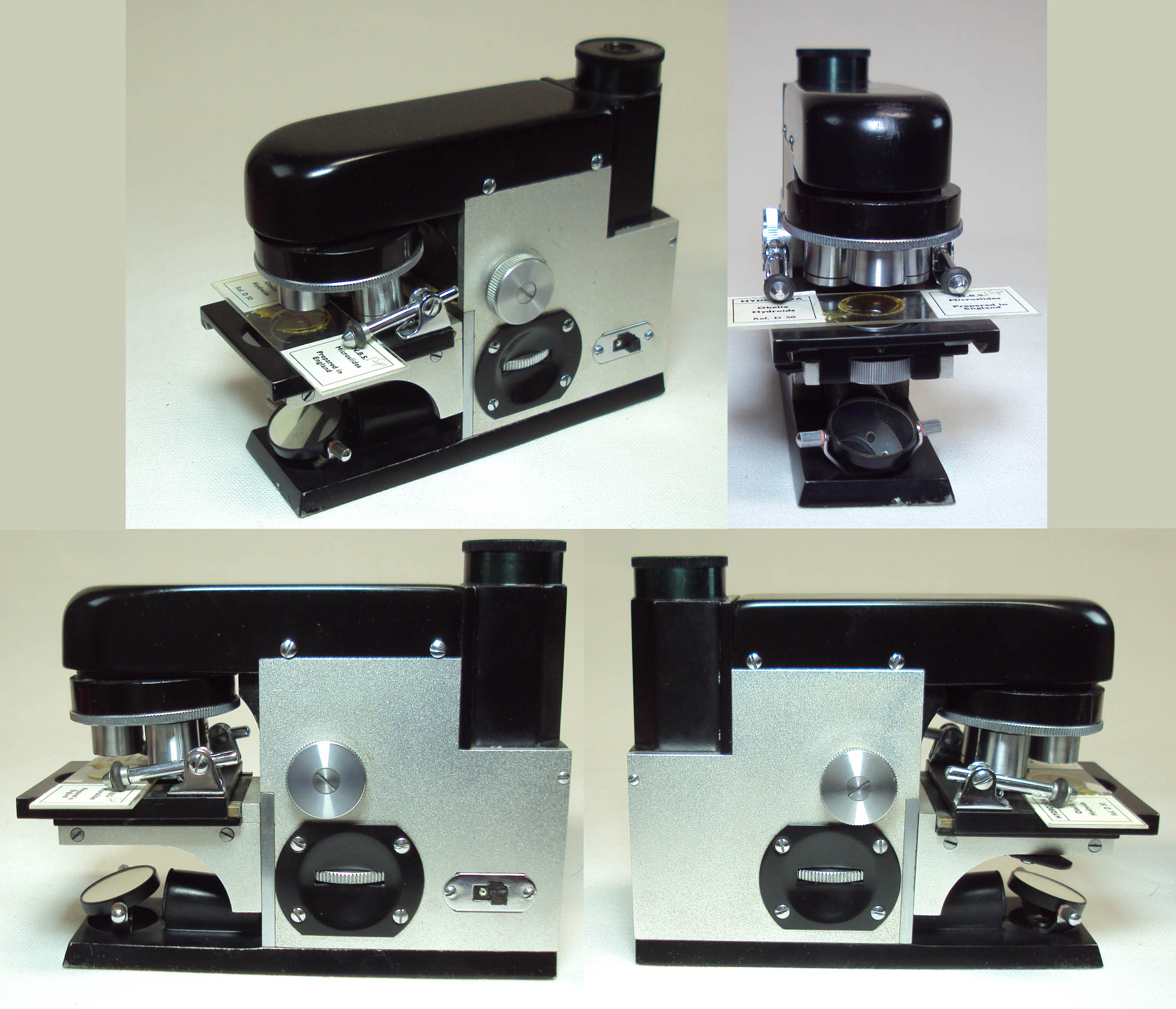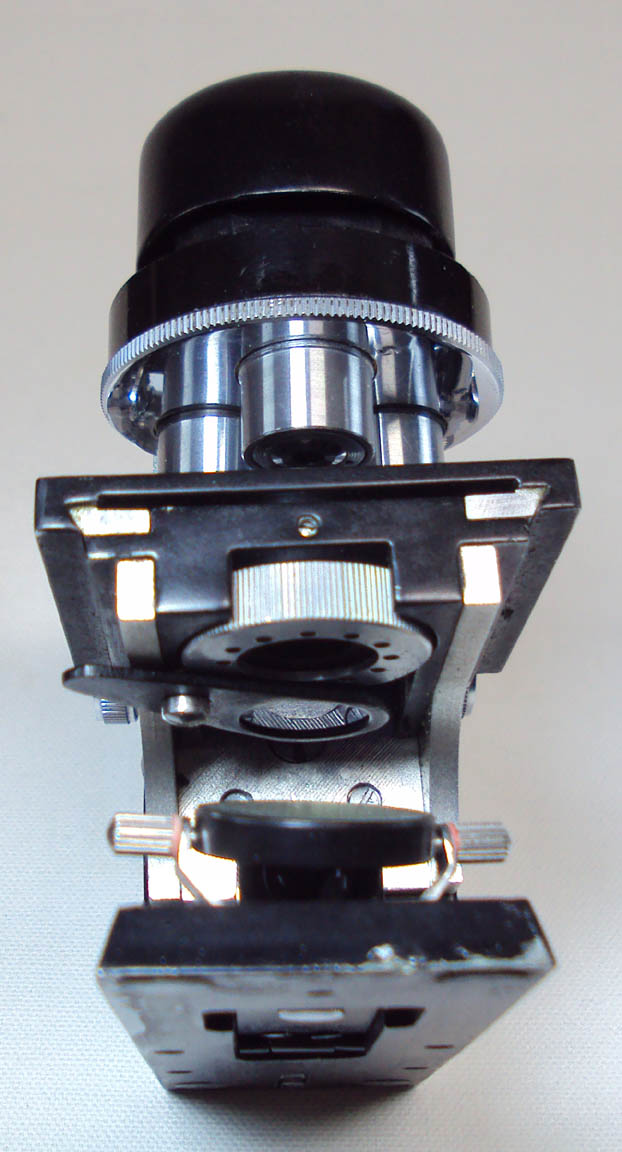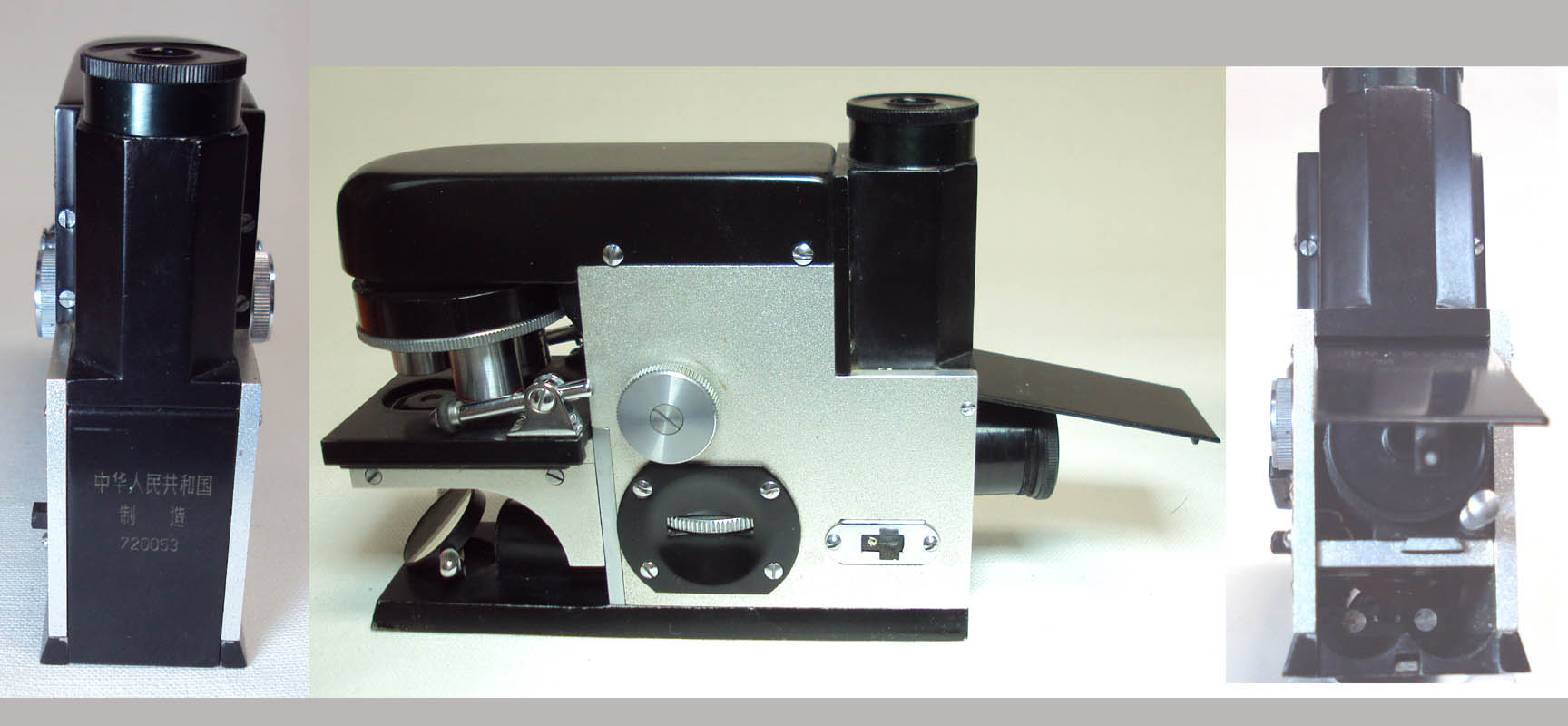Please Use Your Browser Back Button to Return to the Prior Page
PORTABLE COMPOUND MICROSCOPE WITH FOLDING OPTICS
C. 1972
SIGNED ON BACK: 'Made in China' (in Chinese characters)
SERIAL NUMBER: 720053
MODEL: TWX-1

Please Click on any Image for a Larger Version
DESCRIPTION:

Solidly built with metal components. The microscope was designed for Chinese Army field hospitals,
deployed for military use, in the 1970s with the limited production ending toward the end of that decade.
It has both heavy and light metal components and almost no plastic (the only plastic is the black sliding button for the light switch).
 It has a coarse focus control as well as fine. There is a substage iris diaphragm and also a blue filter which can be rotated into the optical path beneath the iris. The iris, controlled by a
continuous knurled ring, is virtually identical to McArthur's design. The focusing controls act on the stage, not the objectives whereas the McArthur design acted on the objectives.
There is virtually no horizontal movement of the stage with either coarse or fine focusing.
It has a coarse focus control as well as fine. There is a substage iris diaphragm and also a blue filter which can be rotated into the optical path beneath the iris. The iris, controlled by a
continuous knurled ring, is virtually identical to McArthur's design. The focusing controls act on the stage, not the objectives whereas the McArthur design acted on the objectives.
There is virtually no horizontal movement of the stage with either coarse or fine focusing.
The stage is a ‘glide’ stage; forward and backward motion of the slide is by the entire stage gliding on a
precision-machined dovetail fitting. Right and left movement occurs under the Nikon-type sprung roller stage clips
which grip the slide. This stage is virtually identical to the one on the Nikon H and HP.
Illumination: Light is directed upward via a small single-sided concave gimballed mirror, and can be used with
external illumination (artificial or natural).
There is also a built-in light powered by two AA batteries; the mirror is turned so as to face the microscope for the
use of the built-in light source.
 The rear compartment housing both batteries and the spare ocular opens upward on an axle at the top of the little door; the push-button release is on the
bottom of the casing. Inside this compartment is a sliding dovetail mount into which the spare ocular screws; a metal rod has a handle which the user can
pull outward to allow the ocular housing to project from the rear to allow it to be screwed in. This metal rod is spring loaded and serves to keep the rear
door under outward tension so it it pops open when the release button on the bottom of the microscope is pushed.
The rear compartment housing both batteries and the spare ocular opens upward on an axle at the top of the little door; the push-button release is on the
bottom of the casing. Inside this compartment is a sliding dovetail mount into which the spare ocular screws; a metal rod has a handle which the user can
pull outward to allow the ocular housing to project from the rear to allow it to be screwed in. This metal rod is spring loaded and serves to keep the rear
door under outward tension so it it pops open when the release button on the bottom of the microscope is pushed.
Optics: The objectives are labelled: 10x N.A 0.25; 45x N.A 0.63; and 90x N.A 1.25. The folded optics system is designed for 160mm tube length objectives.
The objectives have specific threads for this microscope. The mounted eyepiece lens is marked 10X. There is a additional 15x eyepiece in its own compartment
above the battery section. The extra eyepieces screw into the optical tube instead of just sliding in.
Under the top black aluminum cover are two precision-adjusted prisms one mounted over the objectives, the other near the eyepiece tube.
The image is projected upwards from the objective into the first prism, directed 90 degrees horizontally towards the eyepiece, and then down via
the second prism which sits just in front of the eyepiece tube. Below this is a single glass element which is about an inch long, and is a double prism,
directing the light coming down first horizontally, and then upwards to the eyepiece; the optical path is a backwards-S configuration.
 Case: The microscope comes with its own kachi-colored metal case, lined with foam, containing elastic bands to carry two extra bulbs, with external leather carrying strap.
My leather strap has broken.
Case: The microscope comes with its own kachi-colored metal case, lined with foam, containing elastic bands to carry two extra bulbs, with external leather carrying strap.
My leather strap has broken.
Size/Weight: About 5.1 x 2.0 x 4.3 inches. Weight about 2.5 pounds.
The TWX-1 has advantages and disadvantages over the other folded-optics McArthur variants. Although it has both coarse and fine focus,
the lack of the inverted design means slides are not automatically parfocal. Hence the need for both coarse
and fine focus and more moving parts. The increased number of moving parts and the use of some greased fittings, mean the microscope would
not fare as well in very hot or very cold environments like the original McArthur type. There is no tripod fitting on the bottom, also a disadvantage if
long periods of use are required.
The quality of construction of this scope is very high. The precision of the machining and optical alignment are impressive.
HISTORY:
Very little is known about the history of this microscope, but a considerable number were made for the Chinese Red Army in the
1970's. They seem to come up on Ebay to this day (2013), usually one at a time and usually for about $1100 each.
They were made by Tai Yuan Optical instruments in Shanxi Province in the 1970's and production apparently ceased in the 1980's. The production numbers are apparently a secret.
When they first came on the market (via Ebay) they were initially sold by Chinese merchants, more recently by
others. It is unclear if some of these 'Westerners' have bought out
the Chinese merchants, or if the Chinese have simply stopped selling, or ran out. What is known, is that
some of the top Chinese optical facilities
have existed in the city where these were made. These microscopes were apparently made for use by the Red Army in the field.
Why they would want to
get rid of them, even thirty years later, is a mystery. The only part not up to todays standard would be the incandescent bulb rather than
an LED light source. The quality of this little instrument is high, and worth more than the current going price.
If you want a good, highly portable microscope and are willing to pay the price, they are certainly worth much more.




